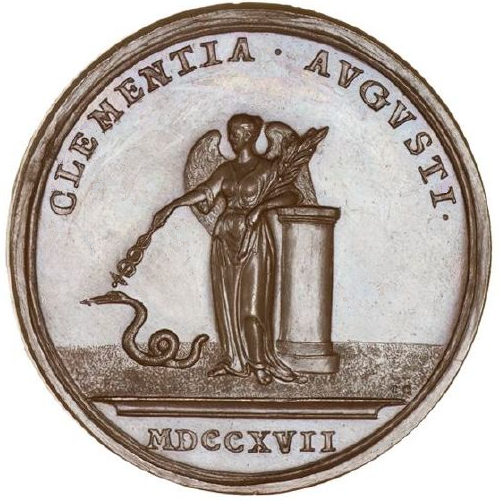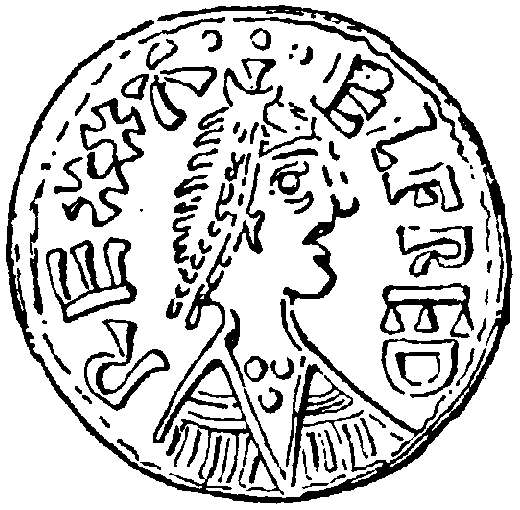|
Indemnity Act 1717
The Indemnity Act 1717 (4 Geo. I c. 15), also referred to as the Act of Grace and Free Pardon, is an Act of the Parliament of Great Britain. The Act was passed by both houses of parliament in July 1717, the last enactment of the session. Philip Henry Stanhope, Henry Reed, ''History of England from the Peace of Utrecht to the Peace of Versailles'' (1849)p. 206/ref> It followed almost two years after the Jacobite rising of 1715, during and after which many Jacobites were taken prisoner. Those later convicted of treason were condemned to death, and some were executed, but by the Act most of the surviving Jacobite prisoners were freed and were permitted to settle either at home or overseas.Peter Hume Brown, ''A History of Scotland to the Present Time''p. 154/ref> Hundreds of Jacobites were freed by the Act. The more notable included the Earl of Carnwath, Lord Nairne, and Lord Widdrington, together with seventeen gentlemen awaiting execution in the Newgate and twenty-six in Ca ... [...More Info...] [...Related Items...] OR: [Wikipedia] [Google] [Baidu] |
Clementia Augusti MDCCXVII
In Roman mythology, Clementia was the goddess of clemency, leniency, mercy, forgiveness, penance, redemption, absolution, acquittal and salvation. She was defined as a celebrated virtue of Julius Caesar, who was famed for his forbearance, especially following Caesar's civil war with Pompey from 49 BC. In 44 BC, a temple was consecrated to her by the Roman Senate, possibly at Caesar's instigation as Caesar was keen to demonstrate that he had this virtue. In a letter to his friend Atticus, Cicero is discussing Caesar's ''clementia'': "You will say they are frightened. I dare say they are, but I'll be bound they're more frightened of Pompey than of Caesar. They are delighted with his artful clemency and fear the other's wrath." Again in ''Pro rege Deiotaro'' (For King Deiotarus) Cicero discusses Caesar's virtue of ''clementia''. There is not much information surrounding Clementia's cult; it would seem that she was merely an abstraction of a particular virtue, one that was reve ... [...More Info...] [...Related Items...] OR: [Wikipedia] [Google] [Baidu] |
Attainder
In English criminal law, attainder or attinctura was the metaphorical "stain" or "corruption of blood" which arose from being condemned for a serious capital crime (felony or treason). It entailed losing not only one's life, property and hereditary titles, but typically also the right to pass them on to one's heirs. Both men and women condemned of capital crimes could be attainted. Attainder by confession resulted from a guilty plea at the bar before judges or before the coroner in sanctuary. Attainder by verdict resulted from conviction by jury. Attainder by process resulted from a legislative act outlawing a fugitive. The last form is obsolete in England (and prohibited in the United States), and the other forms have been abolished. Middle Ages and Renaissance Medieval and Renaissance English monarchs used acts of attainder to deprive nobles of their lands and often their lives. Once attainted, the descendants of the noble could no longer inherit his lands or income. Attainde ... [...More Info...] [...Related Items...] OR: [Wikipedia] [Google] [Baidu] |
1717 In Law
Events January–March * January 1 – Count Carl Gyllenborg, the Swedish ambassador to the Kingdom of Great Britain, is arrested in London over a plot to assist the Pretender to the British throne, James Francis Edward Stuart. * January 4 (December 24, 1716 Old Style) – Great Britain, France and the Dutch Republic sign the Triple Alliance, in an attempt to maintain the Treaty of Utrecht ( 1713), Britain having signed a preliminary alliance with France on November 28 (November 17) 1716. * February 1 – The Silent Sejm, in the Polish–Lithuanian Commonwealth, marks the beginning of the Russian Empire's increasing influence and control over the Commonwealth. * February 6 – Following the treaty between France and Britain, the Pretender James Stuart leaves France, and seeks refuge with Pope Clement XI. * February 26–March 6 – What becomes the northeastern United States is paralyzed by a series of blizzards that bury the region. * March 2 ... [...More Info...] [...Related Items...] OR: [Wikipedia] [Google] [Baidu] |
Mercury (mythology)
Mercury (; la, Mercurius ) is a major god in Roman religion and mythology, being one of the 12 Dii Consentes within the ancient Roman pantheon. He is the god of financial gain, commerce, eloquence, messages, communication (including divination), travelers, boundaries, luck, trickery, and thieves; he also serves as the guide of souls to the underworld. In Roman mythology, he was considered to be either the son of Maia, one of the seven daughters of the Titan Atlas, and Jupiter, or of Caelus and Dies. In his earliest forms, he appears to have been related to the Etruscan deity Turms; both gods share characteristics with the Greek god Hermes. He is often depicted holding the caduceus in his left hand. Similar to his Greek equivalent Hermes, he was awarded a magic wand by Apollo, which later turned into the caduceus, the staff with intertwined snakes. Etymology The name "Mercury" is possibly related to the Latin words ' ("merchandise"; cf. ''merchant'', ''commerce'', etc ... [...More Info...] [...Related Items...] OR: [Wikipedia] [Google] [Baidu] |
Caduceus
The caduceus (☤; ; la, cādūceus, from grc-gre, κηρύκειον "herald's wand, or staff") is the staff carried by Hermes in Greek mythology and consequently by Hermes Trismegistus in Greco-Egyptian mythology. The same staff was also borne by heralds in general, for example by Iris, the messenger of Hera. It is a short staff entwined by two serpents, sometimes surmounted by wings. In Roman iconography, it was often depicted being carried in the left hand of Mercury, the messenger of the gods. Some accounts suggest that the oldest known imagery of the caduceus has its roots in Mesopotamia with the Sumerian god Ningishzida; his symbol, a staff with two snakes intertwined around it, dates back to 4000 BC to 3000 BC. As a symbolic object, it represents Hermes (or the Roman Mercury), and by extension trades, occupations, or undertakings associated with the god. In later Antiquity, the caduceus provided the basis for the astrological symbol representing th ... [...More Info...] [...Related Items...] OR: [Wikipedia] [Google] [Baidu] |
Olive Branch
The olive branch is a symbol of peace and victory associated with customs of ancient Greece and connected with supplication to gods and persons in power. It is found in most cultures of the Mediterranean basin and became associated with peace in the modern world. Ancient Greece and Rome In Greek tradition, a ''hiketeria'' (ἱκετηρία) was an olive branch held by supplicants to show their status as such when approaching persons of power or in temples when supplicating the gods. In Greek mythology, Athena competed with Poseidon for possession of Athens. Poseidon claimed possession by thrusting his trident into the Acropolis, where a well of sea-water gushed out. Athena took possession by planting the first olive tree beside the well. The court of gods and goddesses ruled that Athena had the better right to the land because she had given it the better gift. Olive wreaths were worn by brides"Olive branch". ''The Oxford English Dictionary'', online ed., 2004(subscripti ... [...More Info...] [...Related Items...] OR: [Wikipedia] [Google] [Baidu] |
George I Of Great Britain
George I (George Louis; ; 28 May 1660 – 11 June 1727) was King of Great Britain and Ireland from 1 August 1714 and ruler of the Electorate of Hanover within the Holy Roman Empire from 23 January 1698 until his death in 1727. He was the first British monarch of the House of Hanover as the most senior Protestant descendant of his great-grandfather James VI and I. Born in Hanover to Ernest Augustus and Sophia of Hanover, George inherited the titles and lands of the Duchy of Brunswick-Lüneburg from his father and uncles. A succession of European wars expanded his German domains during his lifetime; he was ratified as prince-elector of Hanover in 1708. After the deaths in 1714 of his mother Sophia and his second cousin Anne, Queen of Great Britain, George ascended the British throne as Anne's closest living Protestant relative under the Act of Settlement 1701. Jacobites attempted, but failed, to depose George and replace him with James Francis Edward Stuart, Anne's Catholi ... [...More Info...] [...Related Items...] OR: [Wikipedia] [Google] [Baidu] |
Royal Mint
The Royal Mint is the United Kingdom's oldest company and the official maker of British coins. Operating under the legal name The Royal Mint Limited, it is a limited company that is wholly owned by His Majesty's Treasury and is under an exclusive contract to supply the nation's coinage. As well as minting circulating coins for the UK and international markets, The Royal Mint is a leading provider of precious metal products. The Royal Mint was historically part of a series of mints that became centralised to produce coins for the Kingdom of England, all of Great Britain, the United Kingdom, and nations across the Commonwealth. The Royal Mint operated within the Tower of London for several hundred years before moving to what is now called Royal Mint Court, where it remained until the 1960s. As Britain followed the rest of the world in decimalising its currency, the Mint moved from London to a new 38-acre (15 ha) plant in Llantrisant, Glamorgan, Wales, where it has remained sin ... [...More Info...] [...Related Items...] OR: [Wikipedia] [Google] [Baidu] |
John Croker (engraver)
John Croker (21 October 1670 – 21 March 1741), born in Saxony and known in his youth as Johann Crocker, was a master jeweller who migrated to London, where he became a medallist and engraved dies for English and later British coins and medals. For most of his adult life Croker worked in England, serving provincial mints as well as that at the Tower of London. For some seven years he engraved the die stamps for the coins of King William III and Queen Anne before becoming Chief Engraver to the Royal Mint, a position he held from 1705 until his death. He worked closely with the head of the Mint, the famous scientist Isaac Newton. Life Crocker was born at Dresden in 1670, the son of a cabinet-maker to John George II, Elector of Saxony, by his marriage to Rosina Frauenlaub. His father died while he was still a small boy, and he was apprenticed to his godfather, a goldsmith and jeweller in Dresden. After completing his apprenticeship, Crocker migrated first to the Netherlands an ... [...More Info...] [...Related Items...] OR: [Wikipedia] [Google] [Baidu] |
Rob Roy MacGregor
Robert Roy MacGregor ( gd, Raibeart Ruadh MacGriogair; 7 March 1671 – 28 December 1734) was a Scottish outlaw, who later became a folk hero. Early life Rob Roy was born in the Kingdom of Scotland at Glengyle, at the head of Loch Katrine, as recorded in the baptismal register of Buchanan, Stirling. His parents were the local Clan MacGregor Tacksman, Donald Glas MacGregor, and Margaret Campbell. He was also descended from the Clan MacDonald of Keppoch through his paternal grandmother. In January 1693, at Corrie Arklet farm near Inversnaid, he married Mary MacGregor of Comar (1671–1745), who was born at Leny Farm, Strathyre. The couple had four sons: James Mor MacGregor (1695–1754), Ranald (1706–1786), Coll (died 1735) and Robert (1715–1754)—known as Robìn Òig or Young Rob. It has been argued that they also adopted a cousin named Duncan, but this is not certain. Jacobite risings Along with many Highland clansmen, at the age of eighteen Rob Roy MacGregor togethe ... [...More Info...] [...Related Items...] OR: [Wikipedia] [Google] [Baidu] |
Clan Gregor
Clan Gregor, also known as Clan MacGregor, () is a Highland Scottish clan that claims an origin in the early 9th century. The clan's most famous member is Rob Roy MacGregor of the late 17th and early 18th centuries. The Clan is also known to have been among the first families of Scotland to begin playing the bagpipes in the early 17th century. History Origins of the clan The Clan Gregor held lands in Glen Orchy, Glenlochy and Glenstrae. According to Iain Moncreiffe the MacGregors were descended from an ancient Celtic royal family, through the Abbots of Glendochart. This is alluded to in the clan's motto: "Royal is my race". There is also a tradition that Gregor was the brother of Kenneth MacAlpin. Though there is little evidence to support this tradition, it is supported by the Scottish historian, William Skene. It is possible that the eponymous Gregor from whom the family derives may have been Griogair, son of Dungal, who was allegedly co-ruler of Alba. Most modern historian ... [...More Info...] [...Related Items...] OR: [Wikipedia] [Google] [Baidu] |
Thomas Harley (of Kinsham)
Thomas Harley (c.1667–1738), of Kinsham Court, Herefordshire. was a British lawyer, diplomat and Tory politician who sat in the English and British House of Commons from 1698 to 1715. He was an ally of his cousin Robert Harley. Early life Harley was the eldest surviving son of Thomas Harley, of Kinsham Court, Herefordshire and his wife Abigail Saltonstall, daughter of Sir Richard Saltonstall of Huntwick and Woodsome, Yorkshire and granddaughter of Sir Richard Saltonstall . He succeeded his father in 1685. He was admitted at Middle Temple in 1682 and called to the bar in 1690. Career Harley was made a deputy lieutenant of Herefordshire in 1694, and was a commissioner for subscriptions to the land bank in 1696. He went abroad to Spain and Portugal in 1697, and observed the negotiations for the Treaty of Ryswick on the way home. With the support of his cousin Robert, he was returned in a contest as Member of Parliament for Radnorshire at the 1698 English general election. Li ... [...More Info...] [...Related Items...] OR: [Wikipedia] [Google] [Baidu] |




.jpg)





.jpg)